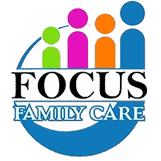While you can absolutely practice speech therapy techniques at home, it’s most effective when done in partnership with a professional speech therapist. You’ll want to focus on creating a language-rich environment through daily activities like mealtime conversations, storytelling, and play. Use household items, picture books, and mirrors to make practice engaging. Track your child’s progress with age-appropriate milestones, and remember that proper guidance guarantees you’re using the right techniques for your child’s specific needs.
Understanding the Role of Parents in Speech Development
Parents play an essential role in their child’s speech development, serving as the primary language models during the most formative years. Your daily interactions provide countless opportunities to shape your child’s language skills through natural conversations, play, and routine activities.
Parents shape their child’s language journey every day, modeling speech patterns and nurturing communication skills through simple moments of connection.
You’re uniquely positioned to monitor your child’s speech milestones and catch potential delays early. By understanding typical language development patterns, you’ll know when your child is progressing appropriately or might need additional support.
Learning effective communication techniques, such as speaking clearly, maintaining eye contact, and using age-appropriate vocabulary, will help you create an enriching language environment at home.
Remember that while you can implement speech therapy strategies at home, you should work alongside professionals when addressing specific speech concerns to guarantee the best outcomes for your child.
Family participation is crucial for enhancing therapy outcomes and maintaining progress between professional sessions.
Essential Speech Therapy Tools and Resources for Home Practice
Four key tools form the foundation of effective home speech therapy: everyday household items, picture books, mirrors, and recording devices. You’ll find these tools help create engaging practice sessions for your child while building their confidence and skills.
| Tool Type | Benefits | Best Uses |
|---|---|---|
| Speech therapy apps | Immediate feedback | Daily practice sessions |
| Interactive games | Builds motivation | Social skill development |
| Visual aids | Enhances learning | Sound production practice |
Transform your home into a learning space by incorporating toys, flashcards, and common objects into speech exercises. Modern speech therapy apps offer structured activities and progress tracking, while interactive games make practice fun and rewarding. Remember to maintain a positive environment and celebrate small victories as your child develops their communication skills. Family-centered care provides the essential support and education needed to help parents effectively manage their child’s speech therapy journey at home.
Everyday Activities That Support Speech Learning
While formal speech therapy sessions are valuable, daily activities present countless opportunities to reinforce language skills naturally. You can turn mealtime conversations into practice by describing foods, tastes, and textures.
Bath time becomes a chance to work on vocabulary with bubbles, toys, and water play.
Turn everyday tasks into playful interactions by singing songs during cleanup or naming items while folding laundry.
Create storytelling sessions during bedtime reading, encouraging your child to describe pictures and predict what happens next.
Shopping trips offer chances to practice categories, counting, and social greetings.
Even car rides become learning moments when you play word games or practice sounds while identifying objects you pass.
For children needing extra support, certified caregivers can assist with specialized speech activities during in-home care sessions.
Creating a Speech-Friendly Home Environment
Beyond daily activities, your home’s physical setup can powerfully support your child’s speech development. Create speech friendly spaces by designating comfortable areas for reading, conversation, and play.
A well-designed home environment actively promotes speech development through intentionally created spaces for learning, sharing, and engaging.
Keep books at your child’s eye level, and display pictures or labels of common objects to encourage word recognition.
Set up cozy corners with pillows where you can engage in language rich interactions through storytelling or puppet play.
Minimize background noise from TVs or devices to help your child focus on speech sounds and conversations.
Consider placing mirrors at your child’s height to let them watch their mouth movements while practicing sounds.
Organize toys and materials in clear containers, labeled with both pictures and words, making it easy for your child to request items they want.
Working with a licensed speech therapist can help ensure your at-home activities complement professional therapeutic techniques for optimal results.
Partnering With Professional Speech Therapists
Although home practice is valuable, partnering with a licensed speech therapist guarantees your child receives expert guidance and structured support.
Professional guidance assures you’re using appropriate techniques and collaboration strategies that complement your child’s formal therapy sessions.
Similar to home health therapy, a customized treatment plan ensures the most effective approach for your child’s specific needs.
Your partnership with a speech therapist should include:
- Regular communication about your child’s progress and challenges, allowing you to adjust home practice activities accordingly
- Learning proper pronunciation and therapeutic techniques directly from the professional to avoid reinforcing incorrect speech patterns
- Receiving customized homework assignments that target your child’s specific speech goals
Remember to maintain open dialogue with your therapist about what’s working at home and where you need additional support.
This teamwork approach creates consistency between therapy sessions and home practice, maximizing your child’s progress toward speech goals.
Tracking Your Child’s Speech Progress at Home
Keeping track of your child’s speech progress helps you identify improvements and areas that need more attention. You’ll want to maintain a detailed record of their speech milestones and daily communication patterns. Progress monitoring allows you to share accurate information with speech therapists and celebrate your child’s achievements.
| Age Group | Speech Milestones | What to Monitor |
|---|---|---|
| 1-2 years | First words | Word count, clarity |
| 2-3 years | Simple phrases | Sentence length, vocabulary |
| 3-4 years | Full sentences | Grammar, pronunciation |
| 4-5 years | Complex language | Conversation skills |
| 5+ years | Fluid speech | Social communication |
Create a simple journal to document weekly observations, recording new sounds, words, or phrases your child masters. Note challenging situations and successful strategies you’ve used. This information becomes invaluable during professional consultations and helps guide your home therapy approach.
Conclusion
You can be a great helper in your child’s speech journey, even without being a speech expert. Think of yourself as a gardener – you’re creating the right conditions for your child’s words to grow and bloom. Set aside time each day to practice together, celebrate small wins, and stay patient as your child learns at their own pace. Working with speech professionals while practicing at home is like having a strong support team for your child.
You’re not alone in helping your child find their voice. Just as a flower needs sunlight and care to thrive, your child needs your loving support and guidance to develop their speech skills. Focus Family Care understands this journey and is here to walk alongside you every step of the way.
If you or a loved one need help, don’t wait. Reach out to Focus Family Care today at (561) 693-1311 or email us at info@focusfamilycare.com.





